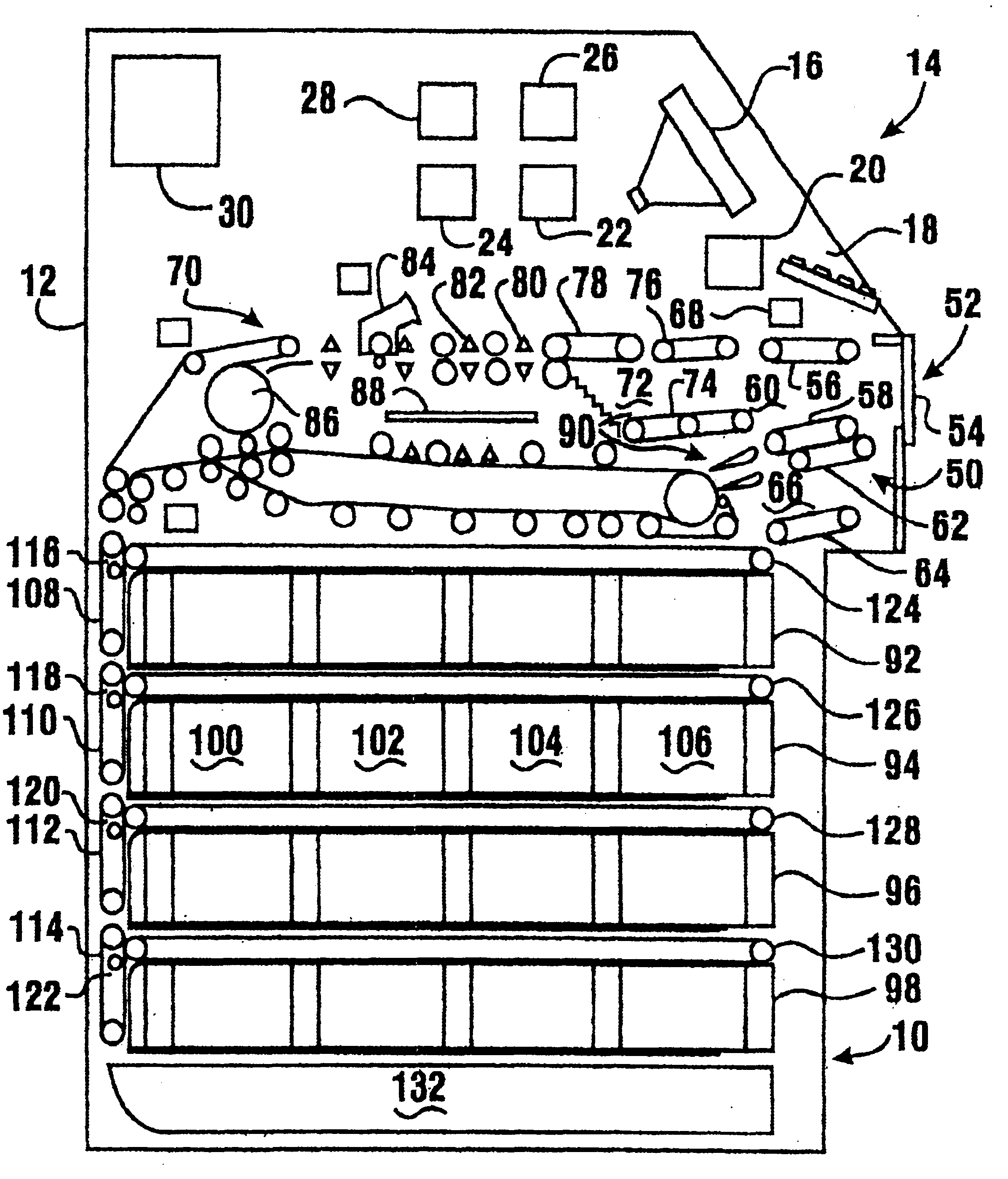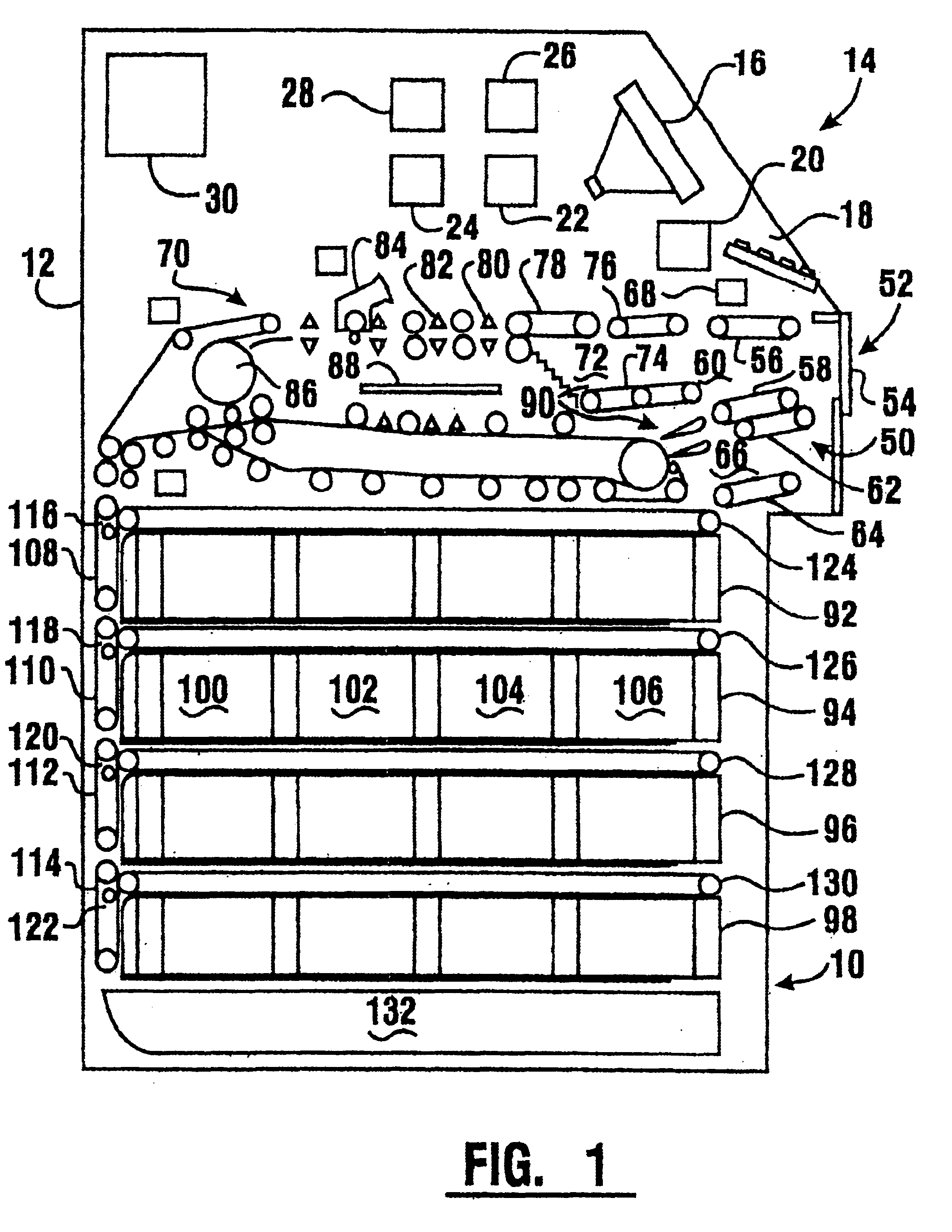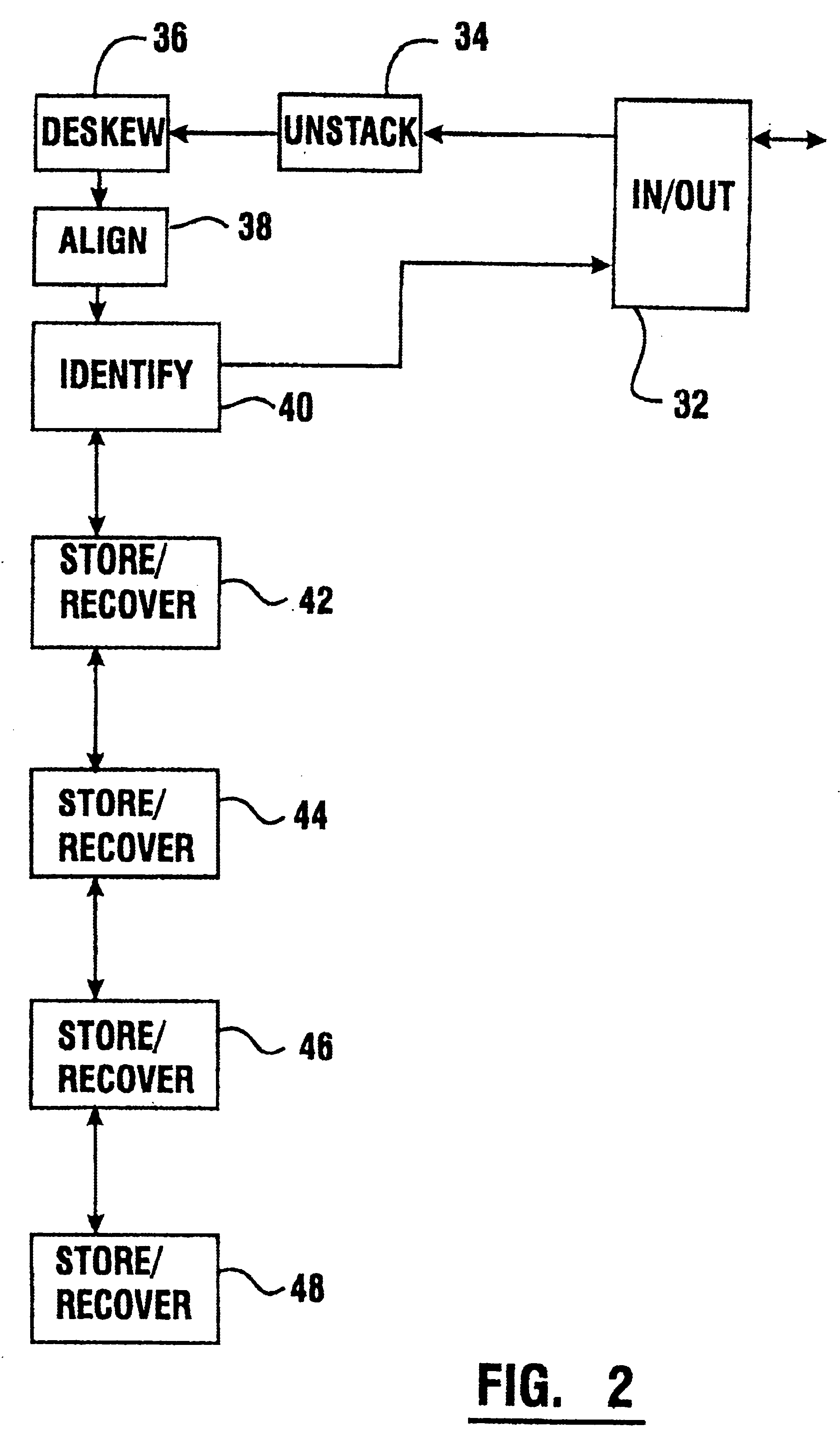Document alignment mechanism for currency recycling automated banking machine
a currency recycling and document alignment technology, applied in the direction of atm details, instruments, transportation and packaging, etc., can solve the problems of inconvenience, difficult to identify the cause of any losses, and difficulty in periodically replacing currency canisters
- Summary
- Abstract
- Description
- Claims
- Application Information
AI Technical Summary
Benefits of technology
Problems solved by technology
Method used
Image
Examples
Embodiment Construction
Referring now to the drawings and particularly to FIG. 1 there is shown therein a currency recycling automated banking machine representing one embodiment of the present invention generally indicated 10. The machine includes a housing 12. Housing 12 includes a customer interface in an interface area generally indicated 14. Interface area 14 includes components used for communicating with a user of the machine. These components may include a display 16 which serves as part of an output device. The interface area may also include a keypad 18 and / or a card reader 20 which serve as portions of manually actuatable input devices through which a user may input information or instructions into the machine. It should be understood that these devices are exemplary and other input and output devices such as a touch screen displays, audio speakers, iris scan devices, fingerprint reading devices, microphones, voice recognition devices, user recognition devices, infrared transmitters and receiver...
PUM
| Property | Measurement | Unit |
|---|---|---|
| relative speed | aaaaa | aaaaa |
| areas | aaaaa | aaaaa |
| distance | aaaaa | aaaaa |
Abstract
Description
Claims
Application Information
 Login to View More
Login to View More - R&D
- Intellectual Property
- Life Sciences
- Materials
- Tech Scout
- Unparalleled Data Quality
- Higher Quality Content
- 60% Fewer Hallucinations
Browse by: Latest US Patents, China's latest patents, Technical Efficacy Thesaurus, Application Domain, Technology Topic, Popular Technical Reports.
© 2025 PatSnap. All rights reserved.Legal|Privacy policy|Modern Slavery Act Transparency Statement|Sitemap|About US| Contact US: help@patsnap.com



